What Makes Kohlrabi Kimchi a Perfect Ferment
Kohlrabi kimchi is a crunchy, probiotic-packed twist on traditional Korean kimchi, perfect for anyone looking to try something unique and gut-friendly.
Kohlrabi, with its mild sweetness and crisp texture, makes an excellent base for kimchi. In this recipe, I use the kohlrabi bulb and its tender leaves, along with some purple kale I picked up at the farmers’ market for a vibrant and nutritious mix.
Why Short Ferment Times Work Best
The leaves of the kohlrabi and the purple kale are softer than traditional cabbage, so a shorter fermentation time helps maintain their crispness and prevents them from going mushy.
Why It’s Important:
While short ferments don’t go through all the fermentation stages needed for a long-lasting, deeply acidic result, they still offer:
- Plenty of beneficial probiotics to support your gut health.
- A delicious tangy flavour that makes this kimchi perfect as a fresh, quick ferment.
Tip: Since this is a short ferment, be sure to enjoy your kohlrabi kimchi within a few weeks. It won’t preserve for months like a traditional kimchi, but it’s so tasty, it probably won’t last that long anyway!
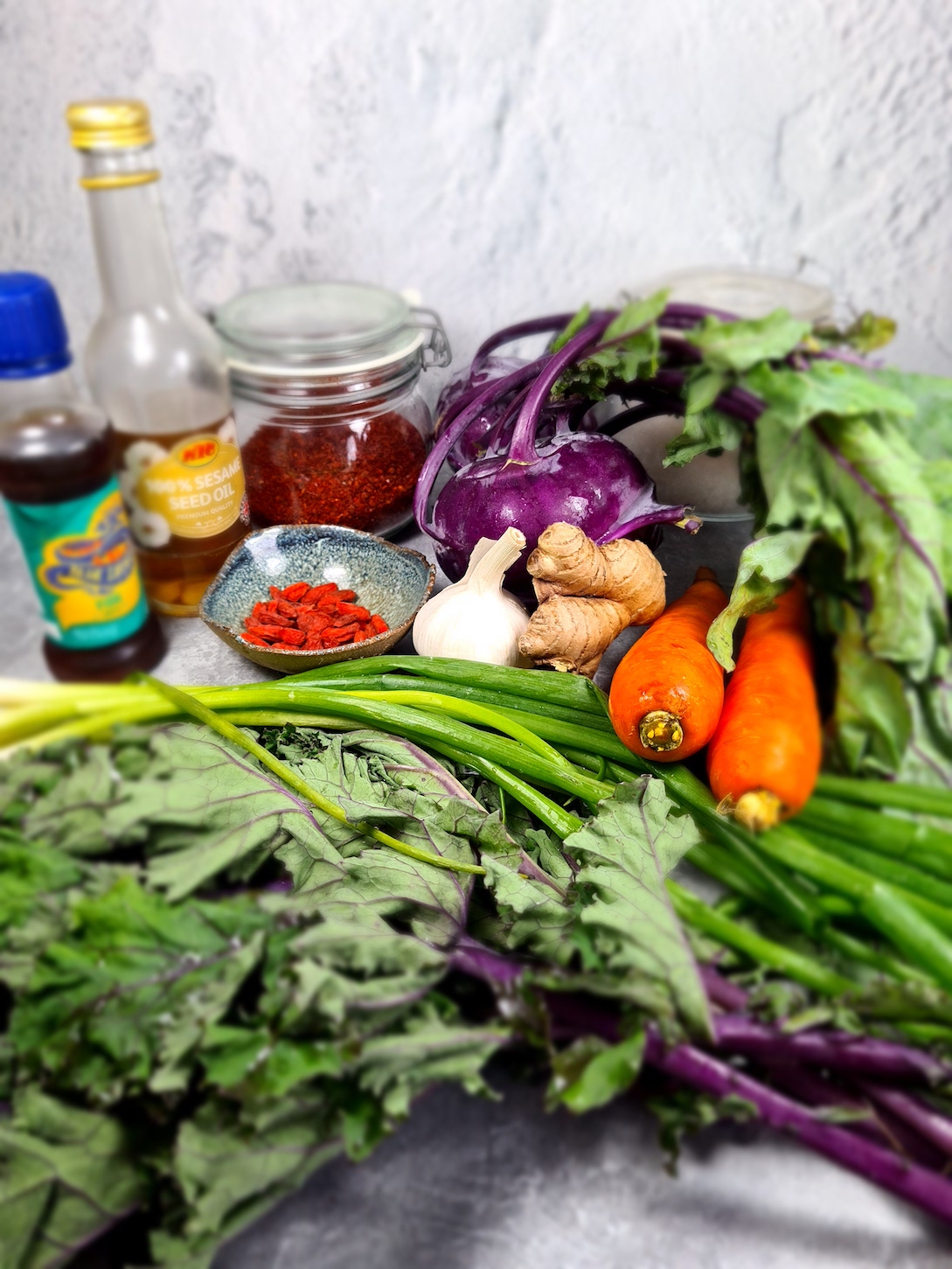
Interested in mastering ferments like this? Join my private fermenting workshop to learn hands-on techniques and create gut-friendly treats!
What is Kimchi?
Kimchi is a traditional Korean dish made by fermenting vegetables, a practice that dates back centuries. Traditionally, kimchi was prepared at the end of the harvest season and stored below ground in ceramic pots called Onggi to preserve it through the winter months.
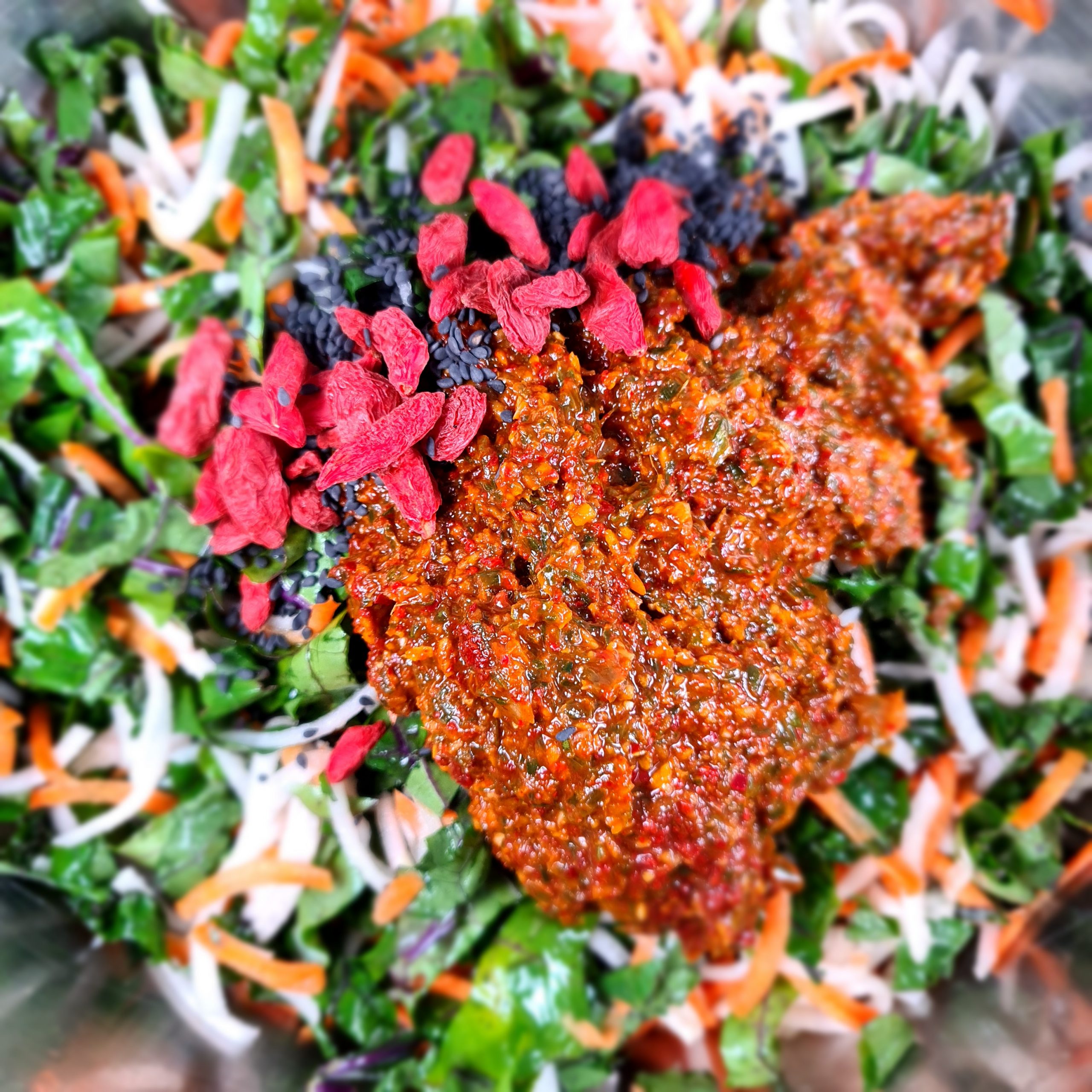
Originally, kimchi was made simply with salt and dried cabbages. Over time, the recipe evolved to include ingredients like:
- Garlic
- Fish pastes
- Spices and radishes
- Chilli powder, which is now a hallmark of modern kimchi.
Today, there are countless varieties of kimchi, including:
- Cabbage kimchi (the most popular)
- Radish kimchi
- Cucumber kimchi
- Water chestnut kimchi
- Even fruit-based kimchi
Kohlrabi’s natural sweetness, crisp bite, and nutritional benefits make it a standout choice for kimchi lovers looking for a unique, gut-friendly ferment.
Why Kohlrabi Kimchi?
Kohlrabi is a versatile and underrated vegetable that belongs to the Brassica family, alongside cabbage, broccoli, cauliflower, kale, and Brussels sprouts.
Here’s what makes kohlrabi ideal for kimchi:
Unique Texture & Flavour:
- Kohlrabi has a crisp, water chestnut-like texture.
- Its flavour is similar to broccoli stalks or the heart of cabbage—only sweeter!
Nutrient Powerhouse:
- Rich in Vitamin C to support immune health.
- A good source of potassium, fibre, and vitamin B6.
- Contains powerful plant compounds linked to heart health and reduced inflammation.
Versatility in Cooking:
- The bulb, leaves, and stems are all edible.
- Enjoy it raw in salads, steamed, roasted, or sautéed in soups and stews.
- And of course, it shines in fermentation!
Gut Health Benefits:
- Fermenting kohlrabi enhances its probiotics, supporting digestion, gut health, and overall well-being.
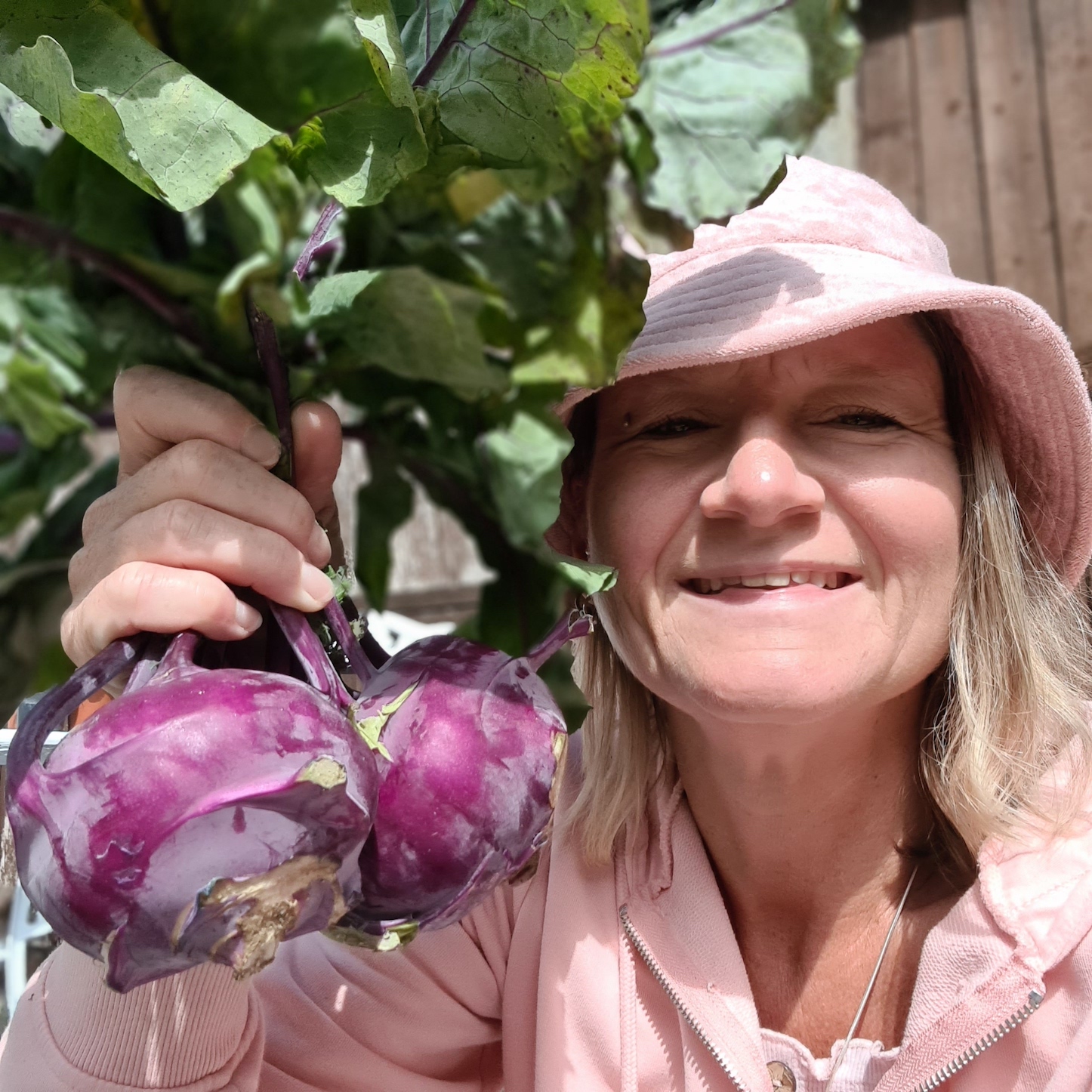
Kohlrabi’s natural sweetness, crisp bite, and nutritional benefits make it a standout choice for kimchi lovers looking for a unique, gut-friendly ferment.
What is Fermentation?
Fermentation is a natural process where microorganisms, such as yeast and bacteria, convert carbohydrates (like starches and sugars) into alcohols or acids. These byproducts not only preserve food but also create unique flavours and beneficial nutrients.
Think of it as a partnership with nature, where microorganisms work their magic to transform food into something delicious and nutritious.
Why Do We Ferment?
Preservation:
Before refrigeration, fermentation was a vital way to preserve food. The alcohols and acids produced during fermentation act as natural preservatives, preventing spoilage.
This method was particularly useful in colder climates where summer crops could be enjoyed throughout winter, ensuring food security and nutritional variety.
Flavour:
Fermentation transforms the taste of food, creating complex flavours that are:
- Tangy
- Sweet
- Salty
- Sour
- Or my personal favourite—umami.
Some of the world’s most loved foods and drinks owe their rich flavours to fermentation, including:
- Cheese
- Wine
- Vinegar
- Beer
- Spirits
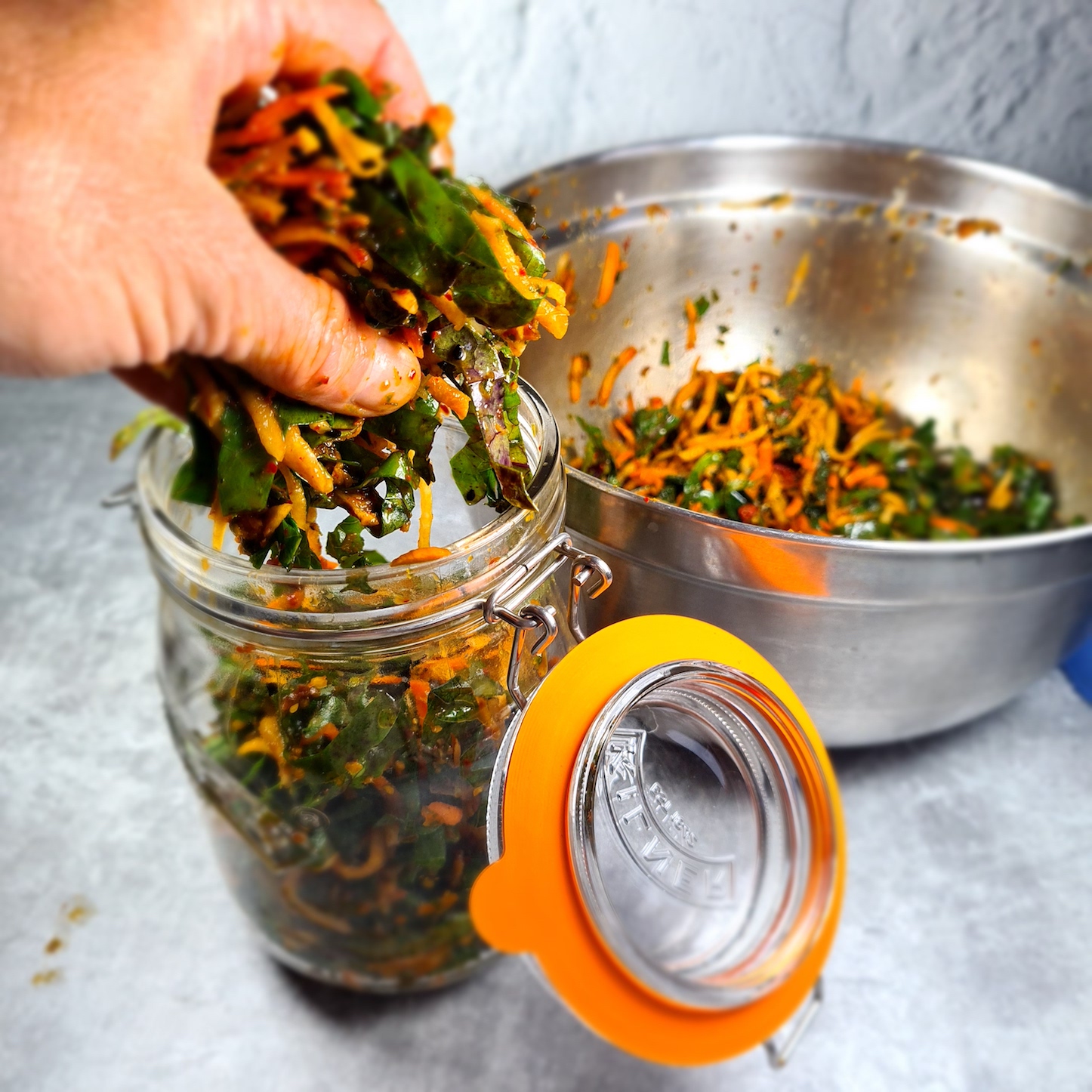
Health:
Fermented foods have made a major comeback in recent years, thanks to their health benefits—particularly the probiotics they contain.
What are probiotics?
Probiotics are “good bacteria” (pro = for, biotic = life) that support the balance of your gut microbiome—the colony of microorganisms in your digestive system.
Why are probiotics important?
- Digestive Health: They improve digestion and nutrient absorption.
- Immune Support: A healthy gut microbiome boosts your immune system.
- Mood and Brain Function: Through the gut-brain connection, probiotics can influence your mood, mental clarity, and overall well-being.
Would You Like to Learn The Magic of Fermenting? ✨
Look No Further! I’ve Got the Perfect Gift For Foodies, Health Enthusiasts or Anyone Curious About Fermenting
Treat Yourself or a Loved One to a Private 2-Hour Fermenting Workshop
Workshops available in-person in Lancing, West Sussex or Online
Join my fermenting workshop and create gut-friendly treats that everyone will love!
Gift Cards Available!
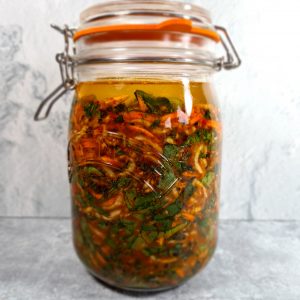
Kohlrabi Kimchi
Equipment
- 1 1-litre clip jar
- 1 pickle weight gü jars work really well
- Grater
- Bowl
- Sharp knife
- Chopping board
- Blender or pestle and mortar
Ingredients
- 1 Large kohlrabi grated
- Kohlrabi leaves finely sliced. Add extra kale if no leaves
- 2 Carrots grated
- 3 Large kale leaves finely sliced
- 3 Spring onions finely chopped
- 1 inch piece Ginger grated or finely chopped
- 4 Garlic cloves finely chopped
- 1 tbsp Sesame oil
- 1 tbsp Fish sauce or vegan alternative (optional)
- 2 tbsp Gochugaru (Korean red peper powder) or mild-medium chilli powder
- 1 tbsp Sesame seeds
- 1 tbsp Goji berries Optional
- 1.5 tbsp Natural salt like sea, or Himalayan salt
- 1.5 litre water
Instructions
Preparation and Soaking
- Disolve the salt in the water.
- Place the grated kohlrabi, carrots, kale, and kohlrabi leaves in a large bowl and cover it with salt water brine. Cover and leave to soak for 6 hours.
- Place the spring onion, ginger, garlic, sesame oil, fish sauce, and gochugaru in a blender or pestle and mortar and blend/grind to a fine paste. Refrigerate.
- After 6 hours, drain the vegetables, reserving a little of the liquid.
- In a large bowl mix the vegetables, kimchi paste, sesame seeds and goji berries until well combined.
- Transfer to the jar, firmly pressing down the contents as you go to eliminate any air pockets.
- Add a little reserved liquid to cover the surface and place a pickle weight or Gü jar on the lid to weigh the contents down.
Fermenting
- Taste after 6-7 days. It should be tangy and slightly fizzy but still retain a crunch.
- When you are happy with the taste, refrigerate and Enjoy!
Recipe Tips:
Bubbling Tip: Your ferment will bubble within 2–4 days. Place your jar on a plate to catch any liquid overflow.
This video was taken after 48 hours of fermenting. I like to call it ‘The Kimchi Fizz’.
Fermenting Tip: Fill your jar to the neck and keep the vegetables submerged to ensure a safe, oxygen-free fermentation.
Spice Tip: Traditional Korean gochugaru gives kimchi its vibrant colour and mild heat. Adjust with hotter chilli if you prefer a kick!
Optional Ingredient—Goji Berries: Goji berries are a nutritional powerhouse, rich in iron, vitamin A, and vitamin C. They bring a hint of sweetness and a vibrant red colour to your kohlrabi kimchi. Packed with antioxidants, goji berries are known for supporting immune function, reducing inflammation, and promoting overall well-being. Add a handful to your mix for a unique and health-boosting twist.
Being native to Asia the goji berry is an excellent addition to kimchi.
Serving suggestions:
Kohlrabi kimchi is a versatile addition to almost any meal. Here are some delicious ways to enjoy it:
- As a Side Dish: Serve alongside rice, noodles, or roasted vegetables.
- In a Slaw: Mix with shredded cabbage and carrots for a tangy, crunchy slaw.
- As a Sauce: Blend it into a spicy, umami-rich sauce for grilled meats or tofu.
- With Snacks: Pair with plantain chips or crackers for a quick, probiotic-rich snack.
- Topping for Burgers or Sandwiches: Add a bold, tangy kick to burgers, wraps, or sandwiches.
- In Stir-Fries: Toss into a stir-fry with tempeh, tofu, or your favourite vegetables.
- In Soups and Stews: Add to soups or kimchi jjigae for a burst of flavour.
- Creative Breakfasts: Use as a topping for avocado toast or add to savoury pancake batters like crispy dosas.
Did you try this recipe?
Share your creations and tag me on social media! If you have any questions, drop them below!

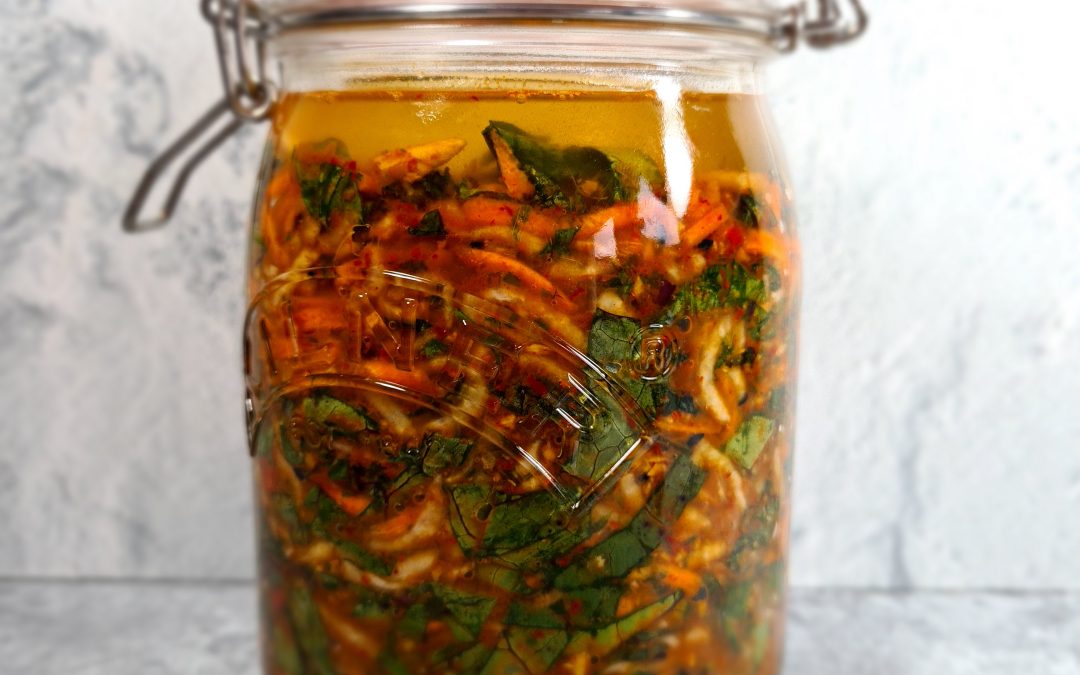
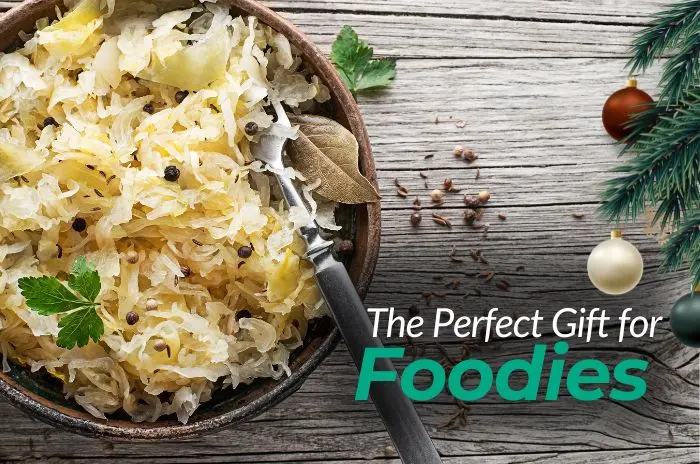


0 Comments